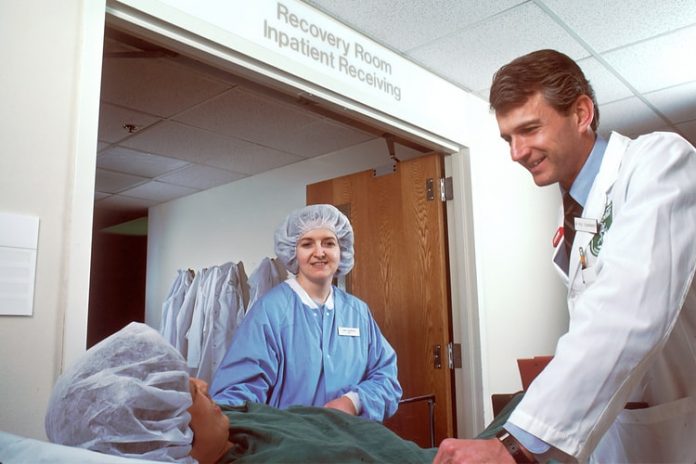This article is written by Neha Virmani, a student from UPES, Dehradun. In this article, the author explains what is included in the definition of an ‘Industry’ and whether hospital is included in the same or not.
Table of Contents
Introduction
‘Industry’ means, “any business, trade, undertaking, manufacture, or calling of employers and includes any calling, service, employment, handicraft or industrial occupation of workmen”. Security of the individual is a basic human right and the protection of individuals is, accordingly, a fundamental obligation of Government. The main concept of industrial legislation is to fasten together both labor and capital in order to create an atmosphere that they are indivisible whole in the production. It is the branch of law which embraces such a wide and effective role in social engineering and social action. Industrial law distinguishes itself from other branches of law as it is the body of legal enactment and judicial principles which deals with employment and non-employment, wages, working conditions, industrial relations, social security’s and labor welfare of employees. It is in a state intervention to put restrictions on employer on one hand and workman, on the other hand, to prevent exploitation to attain industrial peace. Industrial legislation aims at protecting the workers from exploitation and strengthens the values of industrial relations. The legislation provides effective tool to settle industrial disputes and tries to provide safe and healthy industrial atmosphere.

Factors that Influenced the Enactment of Labour Law in India
There are many factors which have influenced the emergence of labor legislation in India and around the world, but the two main reasons which led to the emergences of Labor Law in India are as following:
Development of International Labour Organization
The ILO standards have influenced Indian Labor Legislations to a great extent. ILO standards have been one of the major factor which led to the formation of Indian Labor Legislations, especially after 1946 when Indian National Government assured office. After independence the lawyer makers also never forget to give representatition to the working class of the country hence, we see that the Directive Principles of State Policy in Articles 39, 41, 42„43 and 43A of the constitution, lay down policy objectives in the field of labor which is a having close resemblance and influence to the ILO’s Constitution and the Philadelphia Charter of 1944. Thus, the ILO both directly and indirectly has had a great influence on the Indian Labor Scene and Labor Legislation.
Colonisation by British
Most of the early labor legislation came into being because of the pressure from the manufacturers of Lancashire and Birmingham; because labor employed in factories and mills in India were proving very cheap in comparison to their British counterpart. The British Civil Servants carried with them the British tradition of democracy and pragmatism. The Workman Compensation Act, 1923, the Indian Trade Unions Act, 1926, the Payment of Wages Act, 1936 etc, followed British pattern. The Industrial Workers got support from the freedom struggle and nationalist leaders who made tireless efforts to get protective labor legislations enacted. The Indian Trade Unions Act, the appointment of Royal Commission on Labor etc, was because of pressure from freedom struggle.
“Industry” under Industrial Disputes Act, 1947
Industrial Disputes Act is an act is formulated by our law makers to secure industrial peace and harmony by providing a systematic procedure and machinery for the investigation and settlement of industrial disputes by negotiations. The main purpose of the Industrial Disputes Act, 1947 is to ensure fair terms between employers and employees as well as workmen and employers. It helps not only in preventing disputes between employers and employees but also help in finding the measures to settle such disputes so that the production of the organization is not hampered.
Sec.2 (j) of the Industrial Disputes Act, 1947 defines ‘industry’ as “any business, trade, undertaking, manufacture, or calling of employers and includes any calling, service, employment, handicraft or industrial occupation or avocation of workmen”. This definition is too generic and has led to numerous contradicting interpretations. An industry exists only when there is relationship between employers and employees, the former is engaged in business, trade, undertaking, manufacture or calling of employers and the latter is engaged in the calling, service, employment, handicraft or industrial occupation and avocation. This definition is both exhaustive and inclusive. The words used are of widest amplitude. A considerable amount of difficultly was faced while interpreting these different words. No doubt, the task of interpretation is straightforward. But because of varied forms of industry, especially after rapid industrial progress and widest language used in the definition, the concept of industry expanded in all directions. The present definition continues to be as originally enacted in the Industrial disputes Act 1947. Though this definition has not undergone any amendment, it has undergone variegated judicial interpretations.
The definition of “industry” has evolved and expanded significantly over a period of time by the legislative acts and judicial decisions. The journey of such evolution has been symbolic primarily because of lack clarity in the legislative intent as embodied in the law and conflicting judicial approaches regarding the ambit of such definition.
Attributes of “Industry” Through Judicial Interpretation
STATE OF BOMBAY v. HOSPITAL MAZDOOR SABHA
In this case the Supreme Court held that the activity held by the institutions involves the habitual production and distribution of goods or rendering of materials services to the community at large. Similarly the activity should neither be only for pleasure nor be of a casual nature.
D. N. BANERJEE v. P.R.MUKHERJEE
In this case the court observes that the activity by the institution must be similar in the nature to the organization of business. The court also held that the activity must fall within the ambit of first part of the definition of industry, and the second part will indicate what is included for the workmen from the perspective of second part of the definition.
CORPORATION OF CITY OF NAGPUR v. EMPLOYEES
In his case the court held that the activity by the institutions must involve the satisfaction of the material needs, and not spiritual needs. The court also held that the activity should not be done merely for the government purposes.
NATIONAL UNION OF COMMERCIAL EMPLOYEE v. M.R. MEHER
In this case the court held that the activity held by the institution must involve the employee and the workmen’s effort. However the mere the employer-employee relationship does not result into an industry.
Scope of Term “Hospital as Industry”
STATE OF BOMBAY v. HOSPITAL MAZDOOR SABHA
In 1960, Hospital Mazdoor Sabha Case brought hospitals within ambit of industry. This case involved payment of retrenchment compensation to workmen in JJ Hospitals, Mumbai. The Management pleaded that the Hospital was not involved in any trade or business and hence they are not industry. Court framed a working principle that any systematic activity for production or distribution of goods or services done with help of employees in the manner of a trade or business is an industry. The services in the hospital were held to be material service and hence Hospitals are industry under the Industrial Disputes Act.
The reason for giving a wide interpretation to the word Industry was that the Court wanted to bring organizations within fold of ID Act so that a large number of agitations and strikes could be curtailed and industrial peace could prevail.
UNIVERSITY OF DELHI v. RAM NATH- SELECTIVE EXCEPTION CASE
In 1961, University of Delhi Case arose where a driver of Miranda House was discharged from service which led to dispute. University claimed that it is not industry and the Court agreed. The Court held that education is imparted by teachers who are not workmen. The intention of legislature was not be include educational institutions within industry to extend benefits to the drivers and others who are not core service providers.
MANAGEMENT OF SAFDARJANG HOSPITAL v. KULDIP SINGH
In 1967, Safdarjung Hospital Case This Case dealt with same issue again: Is Hospital an industry? This case reversed the judgment of Hospital Mazdoor Sabha Case as it provided clarity on how to determine whether an activity is industry or not.
Safdarjung Case developed a strong logic for deciding what constitutes service. “Material services involve an activity carried on through co-operation between employers and employees to provide the community with the use of something such as electric power, water, transportation, mail delivery, telephones and the like.”Such material services qualify to be included as Industry. But for professionals like Doctors, Lawyers, Teachers, material service do not arise as they are not engaged in occupation in which employers and employees co-operate. Hence, organizations like Hospitals and Educational institutions do not fall within industry.
DHANRAJGIRI HOSPITAL v. WORKMEN
In Dhanrajgiri Hospital v. Workmen, the main activity of the hospital was imparting of training in nursing and the beds in the hospital were meant for their practical training. It was held not to be an industry, as it was not carrying on any economic activity in the nature of trade or business.
Landmark Case for Determining Scope of Industry
BANGALORE WATER SUPPLY AND SEWERAGE BOARD v. RAJAPPA
In Bangalore Water Supply and Sewerage Board v A. Rajappa, the court constituted a seven-judge bench to enter into a detailed examination of earlier decisions with a view to finding out a rational basis for determining whether activities like professions, club, educational institutions, research institutes, cooperatives, charitable projects, domestic servants, governmental functions, and so on, fall within or outside the scope of the statutory expression ‘industry”.
The majority opinion not only answered it in the affirmative, but exploded the judicial myth. The court overruled its earlier decision in Management of Safdarjung Hospital, National and Dhanrajagirji Hospital v The Workmen. After reviewing earlier decisions of the court this case devised a triple test to determine whether an activity can be called industry or not. These tests were:
Any industry where:
(a) (i) A Systematic activity, (ii) Organized by cooperation between employer and employee (the direct and substantial element is commercial), (iii) For the production and distribution of goods and services calculated to satisfy human wants and wishes (not spiritual or religious but inclusive of material things) or services geared to celestial bliss, i.e. making, of a large scale prasad or (food), prima facie enterprise.
(b) Absence of profit motive of gainful objective is irrelevant be the venture in the public, joint, private or other sector.
(c) The true focus is functional and the decisive test is the nature of the activity with special emphasis on the employer-employee relations.
(d) If the organization is a trade or business it does not cease to be one because of philanthropy animating the undertaking.
Hence, these four measures which were laid down by the judges were followed until new dispute arose in the court regarding the validity of judgment.
Aftermath of Watershed Judgment
After about two decades, when the law was settled, a departure was made by a two-judge bench in Sub-Divisional Inspector of Post Vaikam and Others v Theyyam Joseph and Others without any reference to the seven-judge bench decision in Bangalore Water Supply overrule the judgment, similarly in the case of Coir Board Ernakulam v Indira Devi a two-judge bench held that since the difficulty had arisen because of the judicial interpretation given to the definition of ‘industry in the Industrial Disputes Act, 1947, there was no reason why the matter should not be judicially re-examined. But in Coir Board Ernakulam, Kerala State v Indira Devi a three-judge bench, presided over by the Chief Justice, ruled that the judgment delivered by seven-judge bench of the court in Bangalore Water Supply did not require reconsideration on a reference being made by a two-judge bench of this court, which is bound by the judgment of the larger bench.
Conclusion
The trail of various judicial interpretation about what all is to be included in the definition of Industry under Industrial Dispute Act, 1947 had a narrow scope of the industry initially from various decisions, however by the emergence of Triple Test from the Landmark Judgment of Watershed case has widen the scope interpretation of the definition of Industry under section 2(j) of IDA, 1947. Not only this the water shed judgment has also given opportunity to both the employer and employee to raise issue, which means that one of the aggrieved party always want to bring the definition within the clutches of their industry.
Although, the judgment of Bangalore Water Supply and Sewerage Board v A. Rajappa has been considered as a landmark for defining the Scope of industry still from many other judicial interpretation we have concluded that the Triple Test given in the ratio of the Judgment has many loop holes which needed to be fulfilled. No doubt many times Judges wanted to review the judgment for better interpretation but due to the Ratio of Judges in a Bench Criteria, the judgment was never reversed.
Hence, we can conclude by saying that there is still a lot of scope in the interpretation of the definition, but it could only be possible when a higher bench with more number of judges get any case regarding the interpretation of the definition of Industry. Until then, due to the width of the interpretation of word, a tug-of-war will pertain between the two parties, in spite of various decisions.
LawSikho has created a telegram group for exchanging legal knowledge, referrals and various opportunities. You can click on this link and join:
 Serato DJ Crack 2025Serato DJ PRO Crack
Serato DJ Crack 2025Serato DJ PRO Crack










 Allow notifications
Allow notifications




Very well written! great work
Very informative
This is the best article I have ever read
Totally helpful for all law students
A Must read
Well written
Very useful
Very much informative. Keep going!